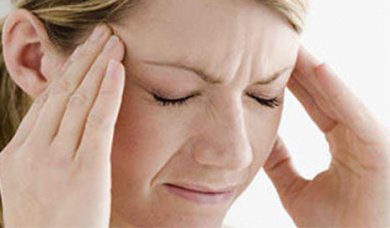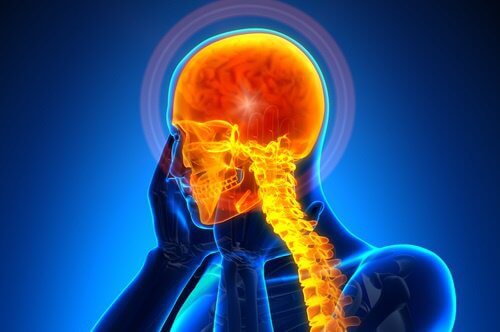Aneurysms: Description and Symptoms


Reviewed and approved by the doctor José Gerardo Rosciano Paganelli
Medical authorities define an aneurysm as the abnormal enlargement of an artery caused by a weakness in the arterial wall. This serious condition affects women over age 50 more frequently than we’d like to think. Read this article to learn more about aneurysms, what their symptoms are, and some possible treatments.
Aneurysms: What You Should Know
The exact cause of aneurysms is not yet known. Some people suffer from them at birth, while don’t get them until late in life. The most common arteries where aneurysms strike are the major artery coming from the heart (the aorta), the one behind the knee (popliteal artery), those going to the brain, the intestinal mesenteric artery, and the spleenic artery in the spleen. The last of these is more common among pregnant women.
The symptoms of an aneurysm depend on where it’s located. If the aneurysm is near the surface of the body, it will cause pain, pressure, and will cause a bump to form. When the aneurysms develop in internal areas, such as the brain, they often don’t cause any symptoms.
A cerebral aneurysm can expand without bursting and put pressure on the surrounding nerves, causing symptoms like:
Also Read: Types of Pain Never to Ignore
- Headache
- Double vision
- Vertigo
- Tinnitus (ringing in the ears)
- Loss of balance
- Stiff neck
- Inability to communicate or understand others speaking
- Sensitivity to light
- Vomiting
- Seizures
- Unconsciousness

If the aneurysm bursts, it can cause low blood pressure, pain, dizziness and rapid heartbeat. The risk of death is much higher if this occurs.
Approximately 5% of the population develops a cerebral aneurysm and the risk is greater in those with a family history or circulation problems.
How to Detect an Aneurysm
A cerebral aneurysm is the most dangerous. If the rupture is caught early enough, death can be avoided. This condition is often brought on by unhealthy habits and other disease.
Immediate action will ensure survival. The estimated time to act is half an hour. You need to act quickly because only 40% of aneurysms are detected in time, the rest of the cases result in death.

Since most people with this affliction don’t show symptoms, and abnormalities are only discovered during the course of routine medical exams, it can be unclear how to deal with an attack.
Before it ruptures, an aneurysm causes what is known as a sentinel headache. This is a severe, chronic headache that doesn’t respond to treatment with medication.
If the pain continues, you should see your doctor. This may be serious and you should be concerned about it. The aneurysm may have ruptured, causing a hemorrhage between the brain and the thin outer tissue that protects the central nervous system.
The accompanying headache is very sharp and can prevent you from opening your eyes. It’s also associated with nausea, dizziness, vomiting, loss of sensation on one side of the body, double vision, weakness, and loss of consciousness.
Since less than half of aneurysm patients survive, and a large percentage of those who do are left with permanent neurological deficits, you should seek immediate medical attention when the headache is unbearable and is not caused by an external injury, like a blow, fall, or accident.
How to Prevent an Aneurysm
Prevention is the best way to avoid an aneurysm. For that:
See your doctor
An annual checkup, complete with tests relevant to your age and state of health, are important to detect signs of any abnormalities. Your doctor should also be familiar with your family history. If someone close to you has suffered an aneurysm, please tell your doctor.

Physicians can perform a variety of tests to rule out any anomalies. Some of the best tests available today include computed tomographies (CT scan), magnetic resonance imaging (MRI) tests, analyses of the cerebrospinal fluid, and angiographies.
Lead a healthier lifestyle
Some of the best things you can do to limit your risk of an aneurysm are:
- Quit smoking.
- Don’t abuse drugs or alcohol.
- Adhere to a healthy, balanced diet.
- Exercise two or three times a week
- Avoid being overweight
- Keep your cholesterol in check and watch your blood pressure.
See Also: Guide to Quit Smoking
Control Your Stress Levels
If you reduce the amount of anxiety and stress in your life, you’ll decrease your likelihood of developing an aneurysm. Do your best to calm down, avoid things that make you feel bad, try to solve problems early before they become more serious, etc. It’s also good to take a vacation when appropriate and get more rest if you tend to overwork yourself.
Don’t forget to sleep at least 6-8 hours each night; it’s good for your health. Make a list of healthy hobbies you enjoy and engage in them frequently. Here are some suggestions:
- Read.
- Take a walk in the park.
- Play with your kids.
- Take care of the plants in your garden.
- Play chess.
- Take a yoga or pilates class.
- Swim.
- Learn to play an instrument.
Meditation can also help you reduce stress and help you avoid an aneurysm.
All cited sources were thoroughly reviewed by our team to ensure their quality, reliability, currency, and validity. The bibliography of this article was considered reliable and of academic or scientific accuracy.
- Júnior, F. L. A., & Rodrigues, C. (2003). Aneurismas da Aorta Abdominal. Angiologia e Cirurgia Vascular: Guia Ilustrado.
- Barreras Molinelli, L., Cacciavillani, G., Penazzi, M., Marinelli, P., & Romano, A. (2015). Aneurisma de vena poplítea. Angiologia. https://doi.org/10.1016/j.angio.2014.12.012
- Paúl-Lapedriza, N., Bilbao-Bilbao, A., & Ríos-Lago, M. (2011). Rehabilitación Neuropsicológica. In Manual de Neuropsicología. https://doi.org/10.1016/B978-84-458-2066-7.00010-0
This text is provided for informational purposes only and does not replace consultation with a professional. If in doubt, consult your specialist.








